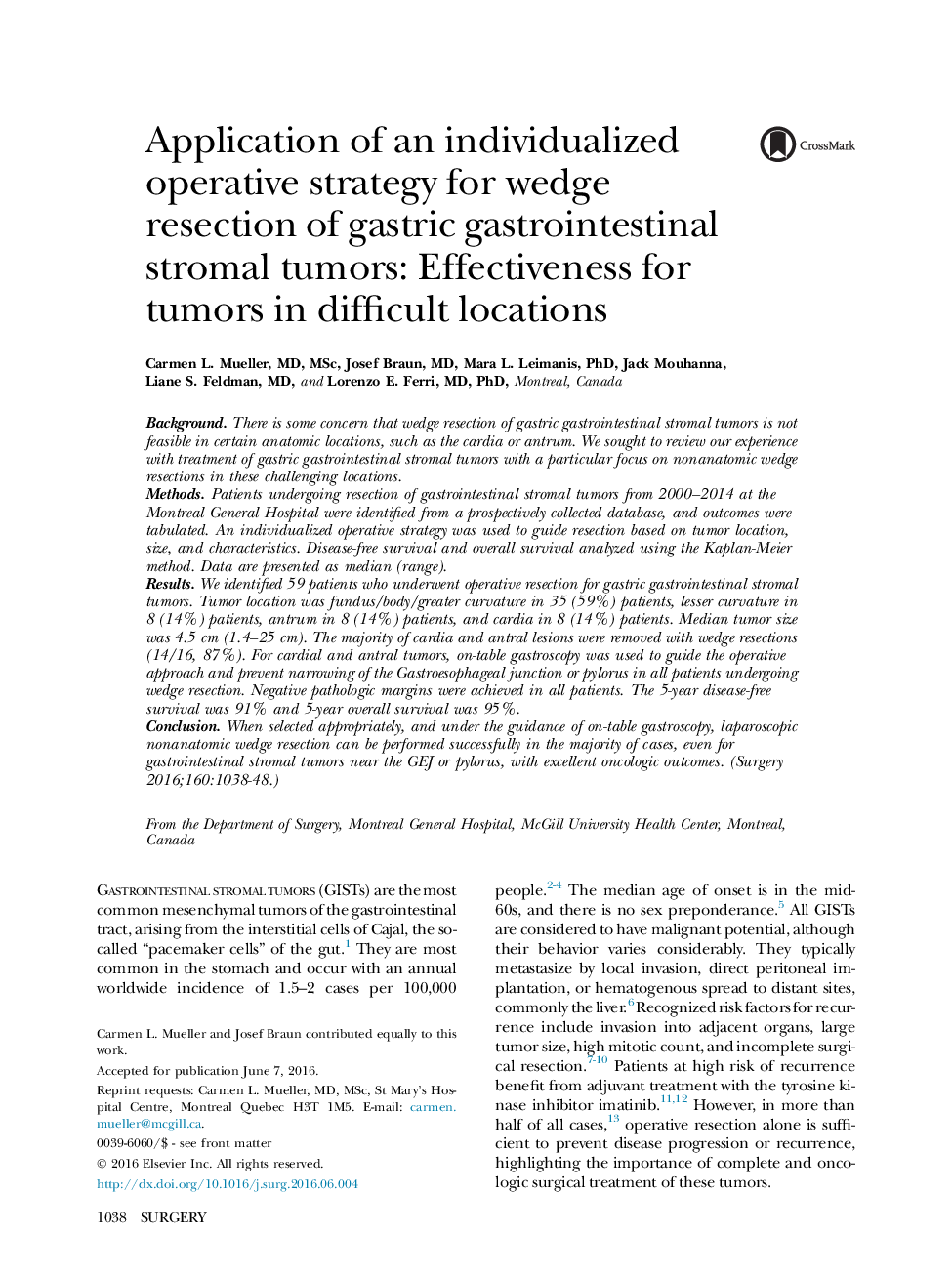| Article ID | Journal | Published Year | Pages | File Type |
|---|---|---|---|---|
| 4306376 | Surgery | 2016 | 11 Pages |
BackgroundThere is some concern that wedge resection of gastric gastrointestinal stromal tumors is not feasible in certain anatomic locations, such as the cardia or antrum. We sought to review our experience with treatment of gastric gastrointestinal stromal tumors with a particular focus on nonanatomic wedge resections in these challenging locations.MethodsPatients undergoing resection of gastrointestinal stromal tumors from 2000–2014 at the Montreal General Hospital were identified from a prospectively collected database, and outcomes were tabulated. An individualized operative strategy was used to guide resection based on tumor location, size, and characteristics. Disease-free survival and overall survival analyzed using the Kaplan-Meier method. Data are presented as median (range).ResultsWe identified 59 patients who underwent operative resection for gastric gastrointestinal stromal tumors. Tumor location was fundus/body/greater curvature in 35 (59%) patients, lesser curvature in 8 (14%) patients, antrum in 8 (14%) patients, and cardia in 8 (14%) patients. Median tumor size was 4.5 cm (1.4–25 cm). The majority of cardia and antral lesions were removed with wedge resections (14/16, 87%). For cardial and antral tumors, on-table gastroscopy was used to guide the operative approach and prevent narrowing of the Gastroesophageal junction or pylorus in all patients undergoing wedge resection. Negative pathologic margins were achieved in all patients. The 5-year disease-free survival was 91% and 5-year overall survival was 95%.ConclusionWhen selected appropriately, and under the guidance of on-table gastroscopy, laparoscopic nonanatomic wedge resection can be performed successfully in the majority of cases, even for gastrointestinal stromal tumors near the GEJ or pylorus, with excellent oncologic outcomes.
